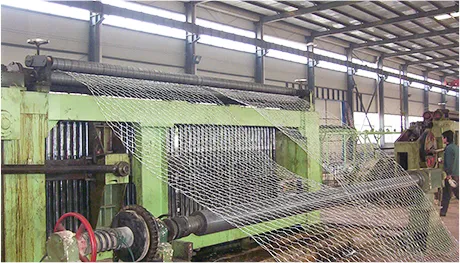-
 Phone:
Phone: -
 Email:
Email:

Innovative Solutions for Rockfall Prevention and Soil Stabilization in Slopes
The Importance of Rockfall Netting in Geotechnical Engineering
Rockfall events pose significant hazards in mountainous and rocky terrains, particularly in areas where infrastructure and human activities intersect with unstable slopes. Consequently, adequate measures must be implemented to safeguard against landslides and falling rocks. One effective solution that has gained prominence in the field of geotechnical engineering is rockfall netting. This article explores the various aspects of rockfall netting, including its function, applications, and benefits.
What is Rockfall Netting?
Rockfall netting is a protective measure designed to mitigate the risks associated with falling rocks. Typically made from high-strength, durable materials such as steel wire mesh, these nets are installed on slopes and cliffs. The primary aim of rockfall netting is to intercept and stabilize loose rocks that may be dislodged by natural processes such as weathering, seismic activity, or human-induced disturbances. The nets can absorb the kinetic energy of falling rocks, preventing them from reaching critical areas such as roads, railways, or structures below.
How Rockfall Netting Works
The functionality of rockfall netting relies on a combination of physical principles and engineering design. When loose rocks fall toward the netting, they encounter resistance that slows down their descent. The netting system is usually anchored to the ground using robust support structures, which ensures that the system can handle the forces exerted by falling debris. Depending on specific site conditions, rockfall netting can be designed to catch various sizes of rocks—from small debris to large boulders.
There are different configurations of rockfall netting, featuring varying mesh sizes and tensile strengths. Engineers assess the slope conditions, including rock types, vegetation, and historical rockfall activity, to determine the most effective netting solution. The correct selection and installation of rockfall netting systems are crucial, as improper design can lead to system failure and potentially catastrophic outcomes.
rockfall netting

Applications of Rockfall Netting
The applications of rockfall netting are diverse, spanning various fields including transportation, civil engineering, and environmental restoration. In transportation, for instance, highways and rail lines near mountainous regions often implement rockfall netting to protect vehicles and passengers. This not only enhances safety but also minimizes maintenance costs associated with rockfall-related incidents.
In addition, rockfall netting is frequently used in construction projects that require stability on steep slopes. Builders can use netting as a temporary or permanent solution during excavation and grading phases, preventing rockfalls from disrupting construction activities or damaging equipment. This is particularly relevant in urban areas where space is limited, and the consequences of rockfalls could be severe.
Environmental restoration projects also benefit from rockfall netting. By controlling rockfall activity in vulnerable areas, netting can help maintain ecological balance, allowing for the natural regeneration of vegetation and wildlife habitats. Furthermore, controlling erosion and managing loose rock debris is crucial for preserving soil quality and preventing sedimentation in nearby water bodies.
Advantages of Rockfall Netting
Rockfall netting offers several advantages that make it an appealing choice for geotechnical engineering projects. Firstly, it provides a relatively cost-effective solution compared to more extensive stabilization methods such as rock anchoring or building retaining walls. Secondly, netting systems are adaptable to various geographical and geological conditions, making them suitable for a wide range of applications. Lastly, the visual impact of rockfall netting is minimal, allowing for the preservation of natural scenery while still providing necessary protection.
In conclusion, rockfall netting is an essential component in the toolkit of geotechnical engineering. Its effectiveness in mitigating rockfall hazards enhances safety for infrastructure, minimizes environmental impact, and contributes to sustainable development practices. As more regions face the challenges posed by unstable slopes, the demand for innovative and effective solutions like rockfall netting will continue to grow, underscoring its significance in modern engineering practices.
-
Wire Mesh for Every Need: A Practical SolutionNewsJul.25,2025
-
Steel Fences: Durable, Secure, and Stylish OptionsNewsJul.25,2025
-
Roll Top Fencing: A Smart Solution for Safety and SecurityNewsJul.25,2025
-
Cattle Farm Fencing Solutions for Maximum SecurityNewsJul.25,2025
-
Affordable Iron Binding Wire SolutionsNewsJul.25,2025
-
Affordable Galvanized Wire SolutionsNewsJul.25,2025
-
Wire Hanger Recycling IdeasNewsJul.25,2025








